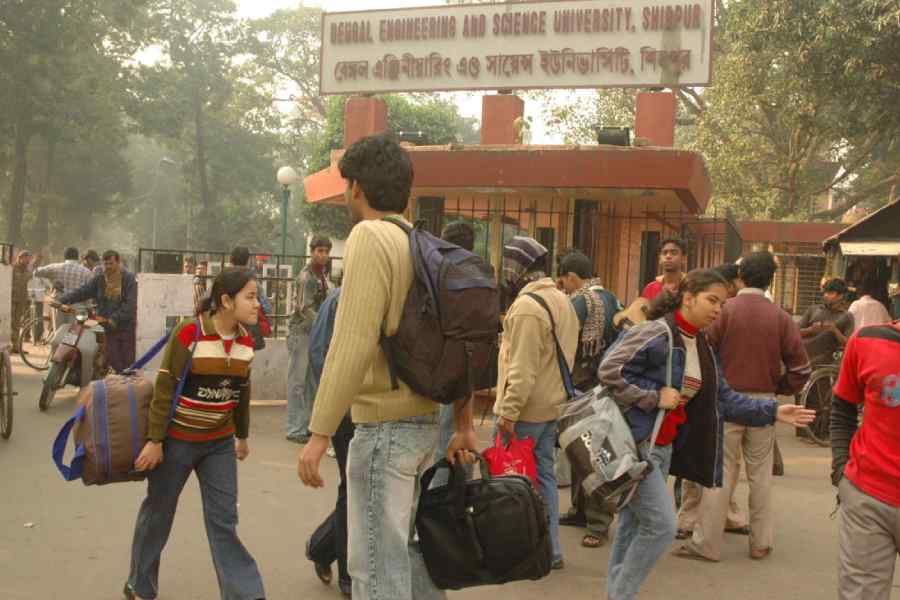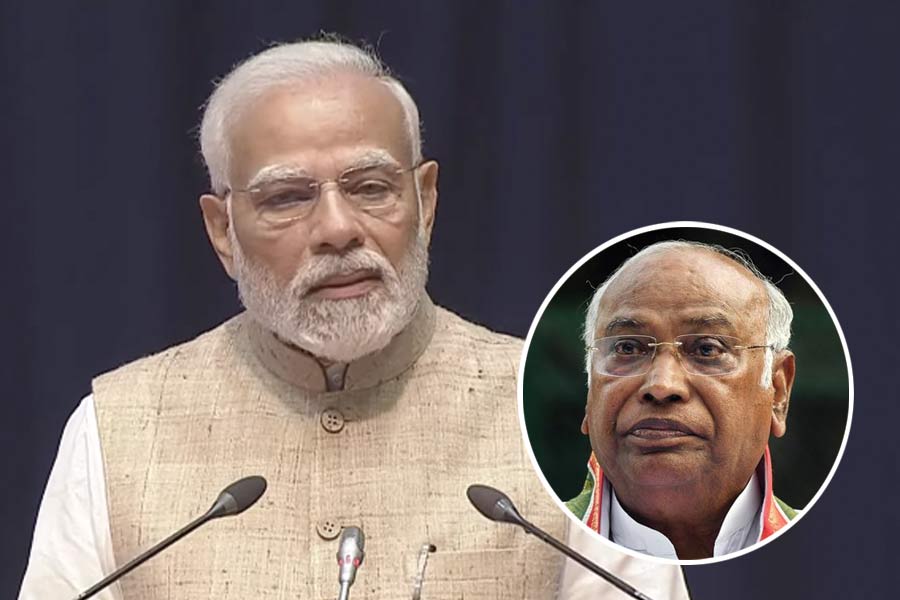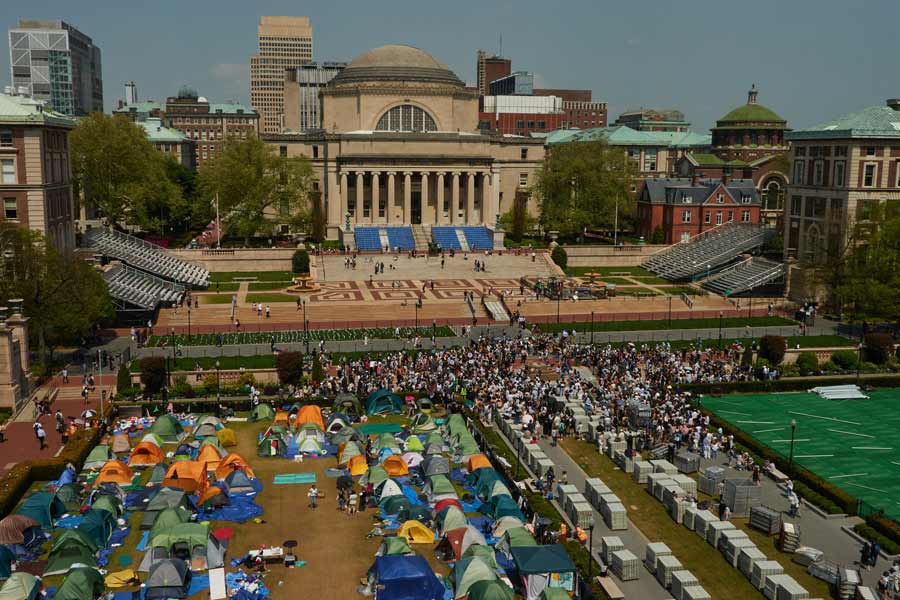A feature article published in this newspaper earlier this month gave me pause. The title, “The Anathema of Arrival”, echoed V.S. Naipaul, the great chronicler of provincial education. The accompanying image was a still from Satyajit Ray’s film, Aparajito, where Bibhutibhushan’s Apu, just arrived from the village with his trunk, bedding, and globe, stands in the middle of a street in Calcutta, staring in wonder at the tall houses of the city. But the article had no joy of discovery — it drooped with sorrow and cried in fear.
Crafted as a first-person account, it told a story of horrors, faced by the poorer rural and suburban students in Calcutta. Being overwhelmed by the volume and the bustle of traffic just like his predecessor from Nischindipur a century ago was only the start of his suffering. It rapidly climaxed in that murky terror of residential student life: ragging, the ceaseless brutality of which made him fear losing his mind, life, nest: “I dreaded the nights. Once or twice I considered sleeping on the pavement, it would have been safer than the hostel.” The terror only ebbed when he moved out of the subsidised college hostel to costlier shared living in a messbari, another institution canonised in the literature and the cinema of Bengal.
It left me shaken. Less than a year ago, in this very column, I had written about provincial bildung, that bumpy process of growth and education, using a similar image of Apu in the darkness of his village hut, absorbed in his globe as his palm-cupped world. Calcutta, the great city of British India, embodied a disproportionate degree of metropolitan importance, just as the Bengal Renaissance-derived bhadralok pushed most non-bhadralok accounts of Bengali history and culture to the margins. Drawn to the epicentre, many generations of provincial youth came to Calcutta. Like Apu, his creator, Bibhutibhushan, and his friend, Nirad C. Chaudhuri, their growth and education became part of the cultural lore of Calcutta, in the Bildungsroman, the memoir, even in the numerous films featuring pranking young men, fashionable urban women, and hilarious, snoring caretakers of messbaris.
Had something gone terribly wrong with that provincial dream that used to wake up to shiny, fulfilling daylight in the city? Or were we wrong about it all along, celebrating the romance of the bright-eyed mofussil or village students who succeeded without losing their organic integrity? Was the monster of ragging always more powerful than the tribal network of rural seniors who watched out for the new arrivals in city hostels that Chaudhuri described as “little colonies in Calcutta of the different districts of East Bengal”? That does sound like the very opposite of the ‘helpful’ senior who had reportedly approached a student from Nadia desperately scouring for hostel accommodation in Jadavpur University. Naïvely trusting the senior’s promise to offer the boy space in his own room, his family handed him to a reality that nurtured him to a mysterious death that still hangs in limbo among suicide, accident, and murder.
Do stories about ragging in college hostels and debilitation and death from them, a pandemic in recent media, become literary or cinematic classics? Not so much in bangla, or anywhere in India, it seems, nothing compared to the painful memorialisation of the baptism by fire in British public schools and the enslaving practice of ‘fagging’ junior boys, narrated by an eclectic range of writers from Shelley to P.G. Wodehouse to Roald Dahl to Winston Churchill. Their chronicles have done much to embed a historical awareness of institutionalised bullying and shape a culture of resistance. But striking literary imaginations of shared student-hostel life in Calcutta would much rather remember the humour and the romance of the provincial subject’s relation with metropolitan life and knowledge. The first meeting between Nirad C. Chaudhuri and Pankaj Siddhanta in the Oxford Mission in Calcutta, where both were student-residents, started with a smiling request by Siddhanta to be allowed to look around Chaudhuri’s room, quickly followed by the Siddhanta “handling whatever objects on the table or on the shelves took his fancy.” Soon after, searching through Chaudhuri’s possessions, he discovered a pot of jam, and in response to his query, was told by Chaudhuri that it was something to eat — though not with rice as Siddhanta thought, but with bread, or even by itself. But then he spotted something else — a bottle of German mineral water that Chaudhuri had been taking for medicinal purposes. Not convinced by Chaudhuri’s caveat that it was “a medicinal water which is very unpleasant to take,” Siddhanta took a liberal quantity of it as well, then, according to Chaudhuri, “soon got a demonstration of my truthfulness, although the cost was mine, for he made the room very messy.” To get rid of the taste, he took another spoonful of the jam before leaving Chaudhuri’s room.
Siddhanta’s relentless curiosity — unappetising as this particular result was — augured the provincial aspirant’s endless thirst for knowledge and experience, soon to find intellectual articulation. Arcs of provincial arrival in the Indian cultural imagination are capped with success, past the rocky roads of funny faux pas. City dreams of rural and suburban students even come true in the novels of Chetan Bhagat, the early-21st-century chronicler of the New India Shining. Even rocky roads have caring angels on the way. Such was the journey of Manobi Bandopadhyay, narrated in her autobiography co-authored with Jhimli Mukherjee-Pandey, where Manobi made her way from Naihati in Hooghly district to the cosmopolitan Jadavpur University, mocked by urban peers and yet supported by kind professors such as Shankha Ghosh.
The memory of those students stays on. Such as that of those who attended MA English lectures at Jadavpur with us during the day but who were actually registered for the night classes. Some of them looked older, a little life-worn. I remember a chirpy classmate referring to them as “uncles”. Maybe they were from the city, maybe they were not. But it felt like they had trodden a long way to attend classes here. Were their stories mellow literary romances or the nightmare of provincial suffering suddenly all around us today? Back then, we didn’t think much. Right now, the dichotomy stares stonily at our faces.
Saikat Majumdar is Professor of English & Creative Writing at Ashoka University










